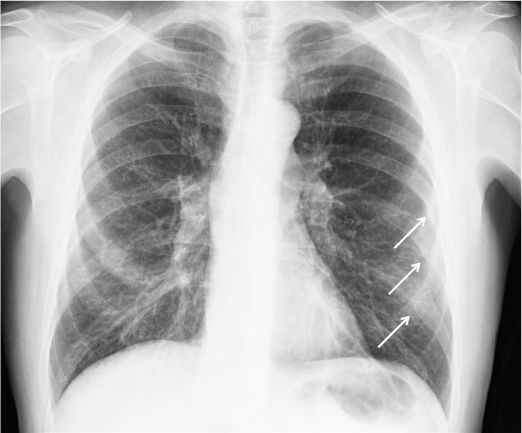Let’s Talk Hemoptysis
So your patient thinks they’re coughing up blood...
Initial questions:
Are they actually coughing up blood?
Or are they having hematemesis?
Or epistaxis?
Seems like they actually are. So what could they have? What should you ask in your history?
Infectious/inflammatory causes are very common:
Acute bronchitis - if you cough enough, you will get some inflammation of your airways and BOOM, hemoptysis)
COPD can cause neoangiogenesis to enhance alveolar blood delivery, new fragile blood vessels can rupture
In immunosuppressed patients, consider aspergillus and of course TB causing necrotic badness, thus also ask travel history
Lung parasites! paragonimiasis, echinococcus, schistosomiasis - ask about travel
Neoplastic
Bronchogenic carcinoma, bronchial adenoma, squamous cell carcinoma — ask about weight loss and constitutional sx, but know that tumors can also cause massive hemoptysis
Structural
Aortobronchial fistula — good point, if their giant thoracic aortic aneurysm eroded into one of their bronchi, they would be in extremis to say the least and you wouldn’t be taking this detailed history…
Tracheo-innominate fistula — usually 3d-6w after tracheostomy placement, life-threatening and scary, we’ll save management of TIF for another POD
Other chronic lung diseases leading to bronchiectasis —> chronic inflammation —>destruction of cartellagenous support —> ruptured blood vessels
Vasculitides and collagen-vascular diseases
Goodpastures - remember this? Me neither. Autoimmune disease where antibodies attack the basement membrane of the kidneys and lungs — so if known renal failure or hematuria + hemoptysis, think about this
Granulomatosis with polyangiitis, SLE, and Behçet’s can all do similar things — h/o autoimmune disorders, family history…
Cardiovascular
PE can cause a pulmonary infarction —> ischemia/necrosis of lung tissue—> bleeding — ask about PE risk factors!
Pulmonary hypertension — ?CHF ?mitral stenosis
OK, enough of that. Let’s break down management.
Are they bleeding a lot? Coughing up large amounts of copious bright red frothy blood in front of you and in respiratory distress?
Massive Hemoptysis
They need
airway management (often emergent intubation), STAT labs/portable CXR, bronchoscopy, CT surgery/IR/ICU consults, CT scan if stable enough
. Also,
position them on their side with the bleeding lung down
so that gravity doesn’t wash all the blood into their ventilated lung. I like this algorithm from Tinti’s below. The only confusing acronyms are MDCT (multidetector computed tomography) and BAE (bronchial artery embolization).

You may be able to intubate the healthy mainstream
as shown below in order to protect the side you’re able to ventilate. As another option pulmonology/IR may help with placement of a Fogarty catheter to tamponade the bleeding side.

If it’s
mild hemoptysis
, think about whether quarantine and TB workup is needed. If not, they most likely have bronchitis, and may only need a CXR, but refer to this simpler algorithm to tell you when you need a little more. It’s unlikely that they’ll have a diagnosis by the time they leave, but they will continue their workup with PCP or pulmonology for definitive diagnosis and management.



